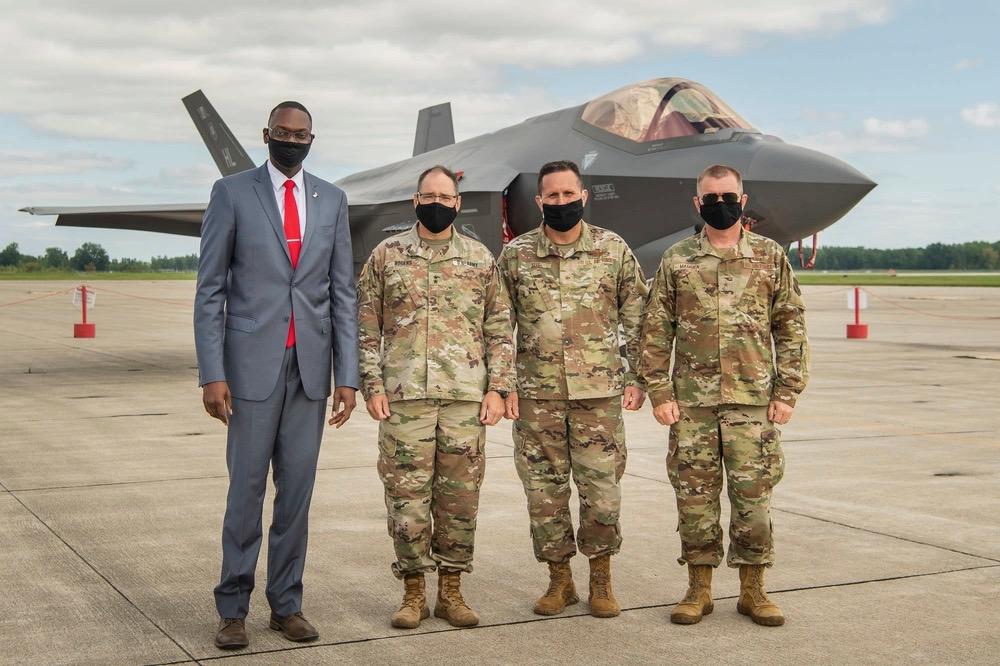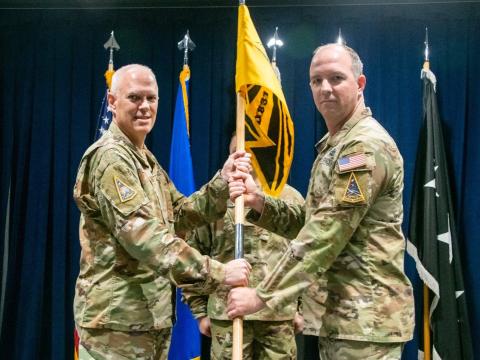Creating Innovators While Innovating
The U.S. Air Force is realigning itself to face near-peer adversaries in contested environments. As part of that shift, the service is looking to spur innovative capabilities and thinking. One organization attempting to dually innovate while preparing innovators is the Kelly Johnson Joint All-Domain Innovation Center in Michigan. The center’s so-called AIM-HI programs are a unique mix of industry, academia—such as Duke University and the University of Michigan—and military—open to warfighters beyond the Air Force and National Guard, to all branches, including special operations—to spur technological and procedural advancements.
The programs are centered on finding solutions for U.S. Department of Defense (DoD) priorities such as joint warfighting, space domain awareness, multidomain operations and supporting operations in contested environments.
“I would say that the growth and the expansion of academic relationships with the University of Michigan and Duke University are pivotal to the success of the program,” said Lt. Col. David Brewer, USAF, Air Force Futures, Center 3, Integration and Innovation, who leads the AIM-HI programs. “Then the expansion to other services, for diversity of experience, operations and thought as important to us and then the output being motivated, systematic, trained innovators."
AIM-HI, which stands for Academia, Industry, Military Hybrid Innovations, is seeking warfighters for its next two cohorts, with applications due January 6 for Cohort 4 and in April for Cohort 5.
The programs are based on instruction from a series of mentors and leaders, including the foundational Innovatrium platform. “Dr. Jeff DeGraff of the University of Michigan, a highly accomplished author, long-term professor has done great things with innovation, things that we can't duplicate in the military,” Col. Brewer said. “And then his partner in crime is our lead instructor, Rob Olson, and he's had 19 years at Procter and Gamble.”
Some of the topics for Cohort 4 include accelerated phased maintenance of legacy aircraft in a contested environment; agile combat employment medical response challenges; collaborative combat aircraft; multidomain operations involving space resiliency and space domain awareness.
“We do this day in and day out, and it's easy right now,” Col. Brewer said. “But in a contested environment, logistics becomes an issue, then doing phased or timed maintenance on these aircraft while they're doing combat. That's a nightmare, and you can't just ignore it. Agile combat employment and maintenance considerations will be rolled into that. The next [topic], agile combat employment medical response, is a little different but related. Let’s say teams are going out and some airman gets his arm crushed in an aircraft strut. When you're in contested environments, you better have medical capabilities.”
Another construct Cohort 4 will be examining is collaborative combat aircraft, a mesh network of airborne systems. “Think of a manned asset that also has on his wing unmanned autonomous systems that are then sending data down to UAVs [unmanned aerial vehicles],” he continued. “You can have one pilot flying a manned asset, but you can also then forward deploy things like the Valkyrie, but how do you integrate manned assets and unmanned assets to conduct a wartime campaign.”
In addition, Cohort 4 will explore human weapons systems and delve into how to maximize human performance. “We want to augment human performance in ways using technology to really emphasize what humans do well,” he said.
Related to that is harnessing artificial intelligence and machine learning “to allow machines to do what machines do well and humans to do what humans do well, and then have them [work together],” Col. Brewer said. For that topic, the colonel envisions working with the Department of the Air Force and DoD’s Chief Digital and Artificial Intelligence Office.
Having Duke University as a partner for Cohort 4 will enable innovators to rely on the university’s medical emphasis. And while both cohorts will bring in warfighters from around the country, Cohort 4 is designed to pull together the southeastern United States as a region, the colonel noted, which also includes drawing from the U.S. Special Forces Command’s SOFWERKS, its innovation arm.
Still in development, Cohort 5 “is focused on tying together the Great Lakes region as a regional hub for innovation—Michigan, Wisconsin, Illinois, Indiana, Ohio and Michigan,” the colonel explained. “That way, we can tie together the strengths of the industry around the Great Lakes and geographically be able to have collaborative relationships.”
That class will look at infrastructure resiliency, industry-related innovation and other topics. “Infrastructure resiliency,…this is more unique to the Air National Guard….related to the Durham, North Carolina, power infrastructure [attack] that took down an entire county’s power,” Col. Brewer explained. “With defensive infrastructure systems [as a topic] going to go into Cohort 5’s problem sets, we're going to start tying in governors and the [Guard] response, which will be a huge focal point for Cohort 5, while Cohort 4 is a little bit more special ops focused and medically focused.”
The colonel clarified that a qualified applicant “that doesn't make it into Cohort 4 would get offered a seat in 5.”
To date, the AIM-HI program has spurred on about 20 innovative teams with 85 people examining tough DoD operational challenges while building a creative mindset, culture and capabilities. “We're very focused on ‘beyond the pitch,’ he said. “It is designed for you to come in and do something revolutionary and transformational, to learn those skill sets and then take them back to your unit and replicate it.” The AIM-HI program has trained warfighters from an E-3 rank to a one-star general, “so it's not a rank dependency.”
For Col. Brewer, having some operational experience, a creative mindset and a natural propensity toward innovation is the biggest draw, with a plan to use innovation after the program.
“The success of the program will have large operational impacts,” the colonel said. “What I briefed to the secretary of the Air Force in August was that AIM-HI and Project Mercury, our sister program, are providing the chief of staff of the Air Force a capability to execute his action order of ‘accelerate, change or lose.’ So, not only are we doing the innovation, but we are also building innovators. The value of any one of the projects is great, and I hope it does great things. But what if that innovator does another 10 more projects?”
For more information on the program and how to apply, visit https://www.innovatrium.org/aim-hi/
AIM-HI Cohort 4 begins Monday, January 23, 2023, at Duke University.
For further questions, contact Lt. Col. David Brewer at david.brewer@us.af.mil.





Comments